

|
We then set off, destination Hawne basin, the two boats would just fit in the top lock, but when we emptied the lock the bottom gate would not open, the boats being to long. |
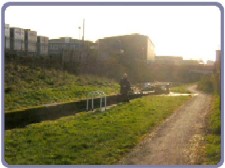
| 
| 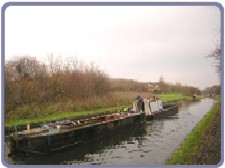
|
|
Christmas 2005 came and went and on Friday 30th December 2005 the slip at Hawne pulled yet one more boat the butty, out of the water. |
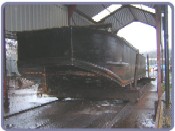
| 
| 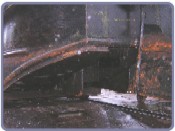
| 
|
|
Back in the water and an hour on an angled grinder loosened all of the welds on the rough deck plating just forward of the engine box. Once removed the bulkhead of the pontoons could be seen clearly, the carefully cut holes in the bulkhead would require plating to make the shorten boat watertight. |
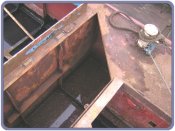
| 
| 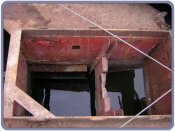
| 
|
|
Work had continued to wire disc the interior surfaces of the load area and then black the same. |

| 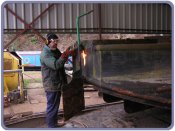
| 
| 
|
|
With the centre removed Tony was able to cut through the inner section of the 1st pontoon and then cut across the deck to the top rubbing strake. He then disappeared into the pontoon blowing a hole towards the bottom of the outer hull. |
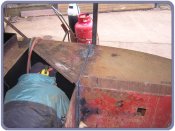
| 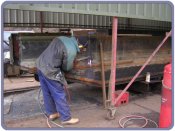
| 
|
|
With the bottom plate cut the pontoon fell to the ground. |

| 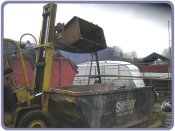
| 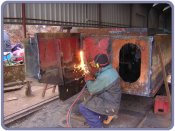
| 
|
|
Again the pontoon bent the bottom plate as the lower rubbing strake was cut, and again the bottom plate was finally cut from the inside. |
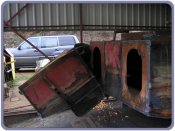
| 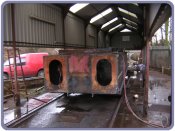
| 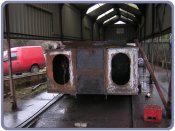
|
|
The crew from Coombeswood must have started early, have a boat that is very powerful and oh yes are speed merchants, as they reached Brades well before Phoenix. As we pulled up at the top lock we where met by the butty being bow hauled up the locks by Alf Danks. |

| 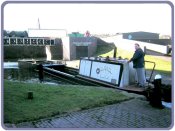
| 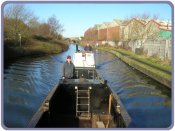
| 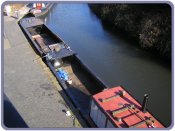
|
|
First Work party
|
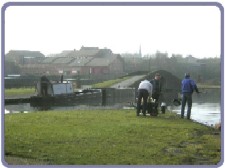
|
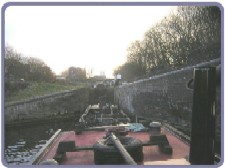
| 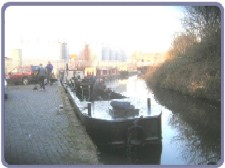
|
|
After much thought and an article in Boundeary Post the new butty was named 'Crow', by the members. Being based on the Titford Canal and the local name for the locks being 'The Crow' our new butty is aptly named. So the Society know has two birds to help in the work of keeping the BCN clean and navigable, 'Phoenix' and 'Crow'. |

| 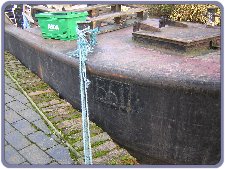
|
Back to page 1 and Index to the Gallery Back to page 9 of the Gallery
On to page 11 of the Gallery: BCN Tugs